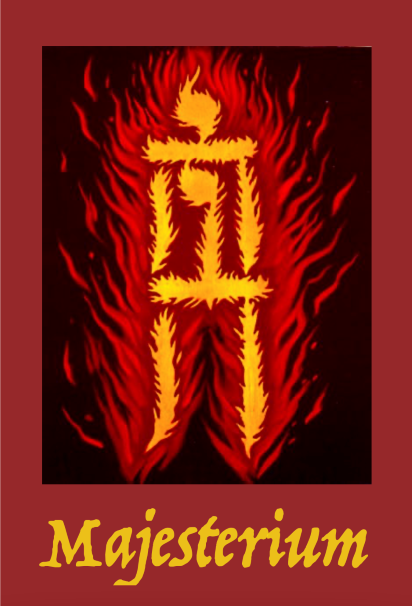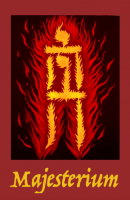The Rev. William C. Redfield
Trinity Episcopal Church, Fayetteville, NY
Lent IV—Year B—March 18, 2012
John 3:14-21
And just as Moses lifted up the serpent in the wilderness, so must the Son of Man be lifted up, that whoever believes in him may have eternal life. For God so loved the world that he gave his only Son, so that everyone who believes in him may not perish but may have eternal life. “Indeed, God did not send the Son into the world to condemn the world, but in order that the world might be saved through him. Those who believe in him are not condemned; but those who do not believe are condemned already, because they have not believed in the name of the only Son of God. And this is the judgment, that the light has come into the world, and people loved darkness rather than light because their deeds were evil. For all who do evil hate the light and do not come to the light, so that their deeds may not be exposed. But those who do what is true come to the light, so that it may be clearly seen that their deeds have been done in God.”
In a little less than three weeks from now a relatively small group of us will gather here in church to mark Holy Saturday. Marking the entombment of Jesus, this day has become—if anything at all—a non-event. Traditionally, we just use the time to clear the deck and prepare the church for the next day’s grand and festive Easter celebration.
Perched between the final agony of Good Friday and the unexpected mystery of Easter, Holy Saturday is that empty space that marks the boundary and threshold from the nothingness of despair and dead-ends to an unexpected grace. What is so striking is that this miracle comes through the very midst of life’s worst possible pain.
Our attention on that day will rest on Mary Magdalene. In fact, using the gospel attributed to her name—one of the recently recovered gospels widely known to the early church but then neglected, lost, and all but forgotten—we will follow the suggestive outline of Jesus’ powerful relationship with Mary Magdalene.
Without getting sidetracked into any kind of titillating or scandalous take on their relationship, we will see the essential truth that Jesus and Mary Magdalene drink from the common cup of love. That is, they are deeply committed to each other’s spiritual growth and care so deeply about each other’s well being that each is willing to lay aside his or her own life for the other. And this is precisely what Jesus does—he does this for Mary Magdalene, his partner in ministry, and he does this for us all as well. But so united are Jesus and Mary Magdalene in this sea of love that death cannot separate them.
In the Apostles Creed we say that, after his death, Jesus descends into hell. As Jesus enters the underworld to redeem all of life and to change the very foundations of existence, he continues to be tethered by the exquisite expression of Mary Magdalene’s love through her profound grief.
In the empty space beside that tomb there is nothing for her to hold on to—no hope, no promise, and no future—only the love she shares with him. And maybe it is the sheer dead-end of her grief and desperation that amplifies her love or that presses it into a new manifestation. But whatever it is, although Jesus is gone, the love remains.
What unfolds in the resurrection is so much more than the continued existence of the one life of Jesus. Resurrection marks the deep truth that we are all swimming in this great sea of love right now and that neither death nor diminishment can limit or compromise that reality. That’s what we will celebrate come Easter. And just as Mary Magdalene’s love accompanies Jesus and tracks him from above when he descends into the earth, so too does Jesus’ love continue to track us from a realm that is both higher and deeper.
*
In his life on earth Jesus often declared his love for and union with God the Father. Yet the fullest expression of this came in his relationships with those around him. For Jesus, love of God and love of neighbor are inseparably woven together. And he shows us that by loving those whom wefind in our lives—our family members, our friends, our spouses, and even those whom we find so difficult and different, we are being led into the fullness of God’s love and God’s kingdom.
*
Now—before I get any further—you might be wondering, first, why I am talking now about Holy Saturday’s entombment and the resurrection that ensues and, second, where I got the audacity to use such a non-canonical writing as the Gospel of Mary Magdalene to draw insight and wisdom from the Pascal event. Let me tell you.
First, the Gospel for this Fourth Sunday of Lent is that famous phrase from John’s Gospel, “For God so loved the world…” Rather than take that passage as the litmus test for orthodox belief as many do, I would like to get to the diamond truth that lies beneath this phrase, “for God so loved the world.”
Second, I am operating on the deep wisdom that I have gained from you over the past 18 years. For over this time I have been privy to the sharing of private events about which I have kept silent—until now. On more occasions than I could ever recount, a surviving spouse—especially a surviving spouse of a marriage that had been deep or long or both—has told me of a felt presence of his or her beloved after death that has been experienced as both very real and very physical. Sometimes this has come in the generalized sense of continuing to be immersed in the love that was shared in life. But sometimes the beloved has appeared to the surviving spouse in a form that was much like a physical form—only lighter and maybe more subtle. And by the way, I have also heard very similar accounts from those who have lost beloved family members and friends.
Here’s what I have come to conclude. True love, deep and abiding love, provides the alchemy that opens our eyes to the reality that we are swimming in this sea of love. We begin to realize that we remain connected to our loved ones because the love remains and because we are inseparable from that love. That is why this connection of love remains unbroken—even beyond the divide of death.
Now let me take this just one more step.
Traditionally, we acknowledge the power of the sacraments in our lives of faith. We think of the Eucharist and Baptism as those outer forms of ritual that deliver to us an inner grace and power. But beyond this more conventional understanding, I have in the past shared an understanding of Jesus’ life as sacrament. This means something more than the fact that God was speaking through Jesus’ words and actions. Even beyond that, Jesus’ life as sacrament also means that it contains within itself a power, a blessing, and an energy that is not confined and contained in Jesus’ life alone. As sacrament, his life is present to us—if we can but recognize it and open to it. As sacrament, his life enables us to follow his example so that we too can walk the path that he walked. So more than just believing in him, we might indeed, walk with him.
But I now want to press this a little farther. I am going to suggest that the gift of conscious love—the love I talked about a minute ago—the committed love I have seen from the members of this parish in the expressions of dedicated marriages and deep friendships—is a sacred sacrament as well. Its external form opens us to a powerful internal grace. Marking the exact path that Jesus took, the path of conscious, committed love delivers us to the threshold into the kingdom.
Here’s how this seems to work. We seem to have been relegated to a far distant ray of creation where we experience our existence in these dense and heavy forms of these human bodies of ours. Life in this dimension is often very painful, difficult, and frustrating. Besides all the challenges and difficult choices that confront and confound us, we are given bodies that get sick and, with advancing age, break down in diminishment. We are bounded by finitude and death. And ultimately, through the loss and suffering inherent in our lives, our hearts get broken wide open.
But all of this has nothing to do with either sin or punishment. They are simply the specific givens of this existence within which this sacrament can fully flower. And so it is right here in the very fragility, finitude, and brokenness of these lives of ours where love can be expressed most eloquently. Not despite this fragility, finitude, and brokenness—but right through them.
If life were easier and less challenging, this love would not be so precious. So to love without holding back—to love without counting the costs—even while we are broken, heartsick, and sinking inexorably toward our own demise—this is the very purpose of life, and this is what life in Christ looks like. And what it requires is only the hardest thing there is—that, although our hearts are battered and broken, we love anyway. Linked to the sacrament of Jesus’ life, our lives too become sacraments of loving even though we are broken—no, because we are broken.
Jesus’ life makes it perfectly clear that this kind of loving is costly. This is what Lent is about. But because it is costly, and yet poured out anyway, it becomes precious. It is in this sacrament that we are joined to Jesus. The purpose of life for us on this planet is to live our lives of suffering and eventual death while daring to love through it all.
Over these many years, I have witnessed how you have committed yourselves to your loved ones through thick and thin and how you have endured through tragedy, heartache, and profound loss. You have shown me the path of life and you have manifested Christ’s love in your devoted caring. Consequently, your lives have become a sacrament for me. While on the outside they may only appear to be the struggle to put one foot in front of the other, the revealed grace in the sacrament of your lives is that you have loved through it all and you continue to do so.
This is the deep well of love from which Mary Magdalene and Jesus drank. And this is the diamond truth that lies beneath that vast phrase, “that God so loved the world.” It is the sacrament of conscious and committed love. And its miracle is that it can blossom from even the darkest of places.


